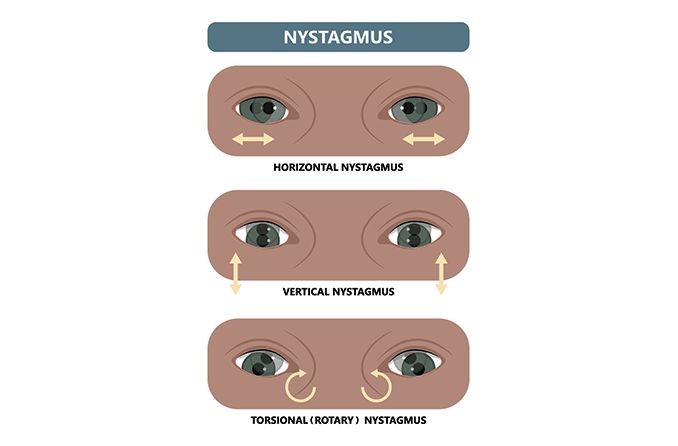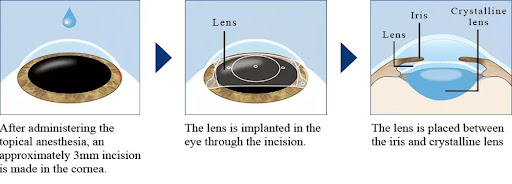Nystagmus, often called “dancing eyes,” is a vision condition wherein the eyes make rapid, repetitive, and uncontrolled movements, such as up and down, side to side, or in a circle. This eye condition is primarily due to disrupted communication between the brain and the ocular muscles responsible for eye movement and stability.
Untreated nystagmus may reduce vision and depth perception and affect balance and coordination. It can also be a symptom of another medical condition that demands a timely intervention. If you or someone you know has nystagmus, visit Eyeonce Eye Clinic for expert care and medication.
Forms of Nystagmus
There are several forms of nystagmus, each with its characteristics and underlying causes.
- Congenital Nystagmus – This type of nystagmus is present from birth or develops very early in infancy. It often has a genetic basis and may vary in severity with different eye movement patterns.
- Acquired nystagmus – It develops later in life, often due to injuries, medical conditions, medications, or other underlying issues.
- Jerk Nystagmus – In this type of nystagmus, the eyes make quick, jerky movements in one direction, followed by a slower movement in the opposite direction. It is a common form of nystagmus and can be associated with congenital and acquired cases.
- Pendular Nystagmus – This type of nystagmus involves rhythmic, back-and-forth eye movements that are more evenly placed. Like jerky nystagmus, it can also be congenital or acquired.
- Spasmus Nutans – A specific type of nystagmus primarily affects infants and young children. It involves eye wiggles, head nodding, and sometimes, poor vision. Spasmus Nutans tends to grow as the child grows older.
- Gaze-Evoked Nystagmus – This type of nystagmus occurs when the eyes move to the side or in specific directions. It can result from certain health conditions or medications affecting our eyes’ work.
- Manifest Latent Nystagmus – This usually happens when one eye has weaker vision. The “bad” eye might start moving more when focusing, especially when the “good” eye is covered.
These forms of nystagmus encompass a range of characteristics, causes, and ages of onset. Only eye care professionals like Dr. Paik Dong Won and Dr. Jung Sae Rom can provide a comprehensive diagnosis and guidance on managing this condition.
Causes and Risk Factors
Nystagmus is primarily due to a neurological problem present at birth or developing in early childhood or later in life. Some causes might include the following:
- Albinism
- Very high refractive errors
- Genetic factors
- Abnormal eye development
- Neurological conditions
- Inner ear disorders
- Congenital cataracts
- Certain medications like anti-epilepsy drugs
- Eye muscles imbalance
- Brain tumors or lesions
- Multiple sclerosis
At Eyeonce Eye Clinic, we make sure that we identify what causes your nystagmus and provide a customized treatment plan that will best address your condition.
Symptoms
Some of the symptoms associated with nystagmus are the following:
- Rhythmic eye movement
- Blurred vision
- Sensitivity to light (photophobia)
- Head tilt or turn
- Involuntary eye movement
- Loss of balance
- Dizziness
- Nighttime vision problems
- Fatigue or eye strain
It is worth noting that the symptoms of nystagmus can differ based on its type, underlying causes, and the individual’s overall health. If you want to learn more about your symptoms and the possible interventions, schedule an appointment with Eyeonce Eye Clinic’s ophthalmologists. They are known to provide precise examination and diagnosis and patient-focused treatments for dancing eyes.
Diagnosis and Treatment
Let us explore the different diagnosis and treatment options for nystagmus at Eyeonce Eye Clinic.
Diagnosis
- Comprehensive eye exam – A thorough eye exam includes checking visual acuity, eye movement, and coordination.
- Medical history – It is done for our eye doctors to fully understand if there is a genetic or acquired basis for the nystagmus.
- Neurological evaluation – Eyeonce also partners with neurologists to assess whether your nystagmus is associated with neurological conditions.
- Specialized test – Additional tests such as electroretinography (ERG) or magnetic resonance imaging (MRI) might be considered to investigate the condition and its potential causes further.
Treatment
- Eyeglasses and contact lenses – Corrective lenses may improve visual acuity and reduce the impact of nystagmus-induced visual distortions, especially for individuals with refractive errors.
- Surgery – In some cases, surgical interventions can help modify the alignment of the eye muscles, reducing the severity of nystagmus and improving visual stability.
- Medications – Certain medications, such as antiepileptic or anti-anxiety medications, can be prescribed to manage nystagmus-related symptoms. However, effectiveness may vary for every individual.
- Vision Therapy – Vision therapy, such as vision exercises and practicing focusing and eye movement techniques, aims to improve eye coordination and help individuals adapt to nystagmus-induced visual challenges.
- Prism lenses – These can be prescribed to adjust how light enters the eyes, reducing the impact of nystagmus-related visual disturbances.
- Assistive devices – Certain assistive devices, such as magnifying glasses and electronic devices, can help individuals with nystagmus perform tasks more comfortably.
- Low vision rehabilitation – This treatment option is suitable for individuals with severe vision impairment due to nystagmus, which can provide specialized training and tools to enhance daily activities.
Remember that there is no one-size-fits-all approach to treating nystagmus, as the best treatment plan varies. Consulting with an experienced eye care professional is essential for accurate diagnosis and developing a tailored treatment strategy.
Why choose Eyeonce Eye Clinic Gangnam for nystagmus treatment?
Utmost Patient Care
Our eye care professionals and staff ensure to give you your money’s worth. We guarantee you receive the best medication possible and assure you that you are guided and understood, making you feel comfortable and confident at every step.
Comprehensive Consultation
Eyeonce Eye Clinic offers comprehensive eye examinations to evaluate your condition and determine the best nystagmus treatment. Our ophthalmologists take their time to cater to your questions and address your concerns, ensuring you make an informed decision about our vision correction options.
Expert Eye Doctors
Our ophthalmologists, Head Director Dr. Paik Dong Won and Medical Director Dr. Jung Sae Rom, are highly knowledgeable and adept in treating nystagmus. They always use the latest techniques and technologies to ensure optimal results.
Frequently Asked Questions
While nystagmus has no definitive cure, various treatments can help manage its symptoms and improve visual comfort.
The progression of nystagmus can vary. Some individuals may experience worsened symptoms, while others may find their symptoms stabilize over time.
Nystagmus itself does not usually lead to complete blindness. However, it can cause significant visual impairment and challenges.
Conclusion
While nystagmus may present various obstacles, individuals with this condition can lead fulfilling lives by utilizing available treatment options at Eyeonce Eye Clinic. With their specialized knowledge, they can provide the support and solutions you need to manage nystagmus. Book an appointment with them today and journey toward a clearer and more stable vision.



